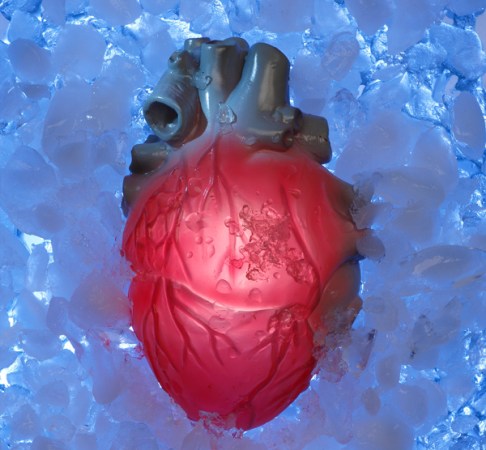Holy crap. These guys in Germany just cured AIDS!
Of course, the procedure is so expensive, complicated, and risky that it’s not replicable as a large-scale public health strategy, but we’ll ignore that for a minute. Here’s how they did it.
Drs. Gero Hutter and Eckhard Thiel are blood cancer experts at the Charite Medical University in Berlin. Their patient, an American ex-pat, was suffering from leukemia as well as a full-blown case of AIDS. His case was so desperate that his doctors decided to get craaazy and give him a bone-marrow transplant–(this isn’t the crazy part)–using blood stem cells from a donor who was immune to HIV (this is). About 10 years ago, doctors discovered that a few of their gay male patients never developed AIDS, despite engaging in risky sex with hundreds of partners. It turned out that they had a rare mutation called Delta 32 that blocks a molecule in HIV from adhering to the cell surface. Delta 32 must be inherited from both parents; it occurs at a rate of roughly 1 percent in European populations (it’s more common in Northern Europe and much much, rarer–basically unheard of–in Africa and Asia), so it was difficult but not impossible for the doctors to find a donor in Germany who fit the bill. The patient was asked to stop taking his antiretroviral AIDS medication for the duration of the procedure with the understanding that he’d have to restart the meds fairly soon after the transplant was complete and the level of the virus in his bloodstream started to rise. But to everyone’s surprise, it never rose, not at all. It has now been close to two years since the transplant, and there are still no traces of HIV in the patient’s blood or brain tissues. So: success! A cure! For this guy, at least.
Now back to the caveats. A bone marrow transplant is dangerous and painful–it involves wiping out the patient’s entire immune system with chemotherapy and radiation and carries a 30 percent mortality rate. The prospect is so daunting that one doctor joked to the New York Times that he’d rather just take antiretrovirals for the rest of his life. It’s also not always possible to find a donor who is a good match for the recipient (if the donated cells are not taken from someone with similar human leukocyte antigens, a crucial part of the immune system, they are likely to be rejected or cause severe graft-versus-host disease) and is also happens to be resistant to HIV. This would be particularly tricky in Africa, where the mutation doesn’t occur naturally. And carriers of Delta 32 might actually be more susceptible to certain other diseases, like the West Nile virus.
But even though this particular procedure doesn’t offer a new standard of care for AIDS patients worldwide, it offers a lot more than just hope (although hope is nice). For one thing, researchers now have a clear path to a cure. If the steps taken by Hutter and Thiel can be refined, simplified, and made less risky, they could become a viable protocol for thousands of other people with AIDS. Eventually, this might entail bone-marrow transplants in which not all of the body’s immune cells are killed, or “snipping” the segment of DNA that codes for HIV receptors out out of blood cells and transplanting them into AIDS patients. Eventually, patients’ own cells could actually be engineered to resist HIV. These advances are probably decades away, but this breakthrough is confirmation that, once they’re made, they could amount to something big.













